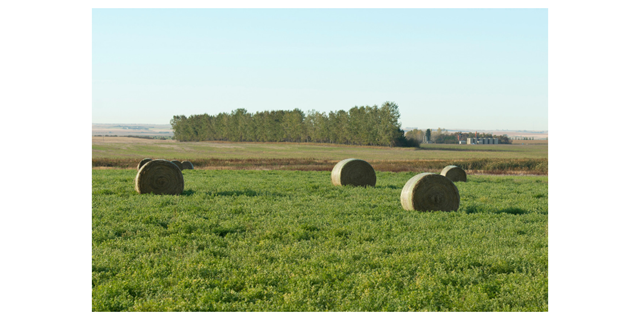By Dr. Matt McMillan, Ph.D.
Alfalfa hay is one of the most common forage sources for horses and for good reason. Good quality alfalfa hay provides a highly digestible forage source containing many necessary nutrients needed by the horse. Also, it provides a natural buffering capacity to benefit horses to aid in the prevention and reduction of gastric ulcers. Alfalfa forage sources come in many forms, such as hay, pellets, cubes, and chaff. It’s been thought that a long-stem forage source was a better form of forage to feed than a smaller particle size. Recently, there’s been minimal information regarding the effects of particle size and buffering capacity of alfalfa on the horse stomach lining.
Recently, an investigation was set forth to study weanlings and how their gastric mucosa was effected by feeding two forms of alfalfa with different particle sizes versus feeding a grass hay. The premise of this study was due to previous reports concluding that 32 to 94% of weanlings exhibit evidence of gastric mucosal lesions with >80% of racehorses exhibiting lesions. General risk factors leading to gastric mucosal lesions include but are not limited to stall confinement, strenuous exercise, transport stress in adult horses, weaning process in foals, and anti-inflammatory drugs.
In the study, three groups were fed, with each group having an average daily consumption of: ~9.5 lbs alfalfa chaff (Group 1), ~11.0 lbs alfalfa pellets (Group 2), and ~18.3 lbs grass hay (Group 3). Group 1, particles were longer than 2 mm and in group 2, particles were smaller than 0.25 mm. Each group also received a feed ration at a similar daily rate to balance the diet for proper maintenance and growth.
Weight gain over the trial period did not differ between the groups. Prior to weaning, horses are scoped to determine prevalence of gastric mucosal lesions. Approximately 84% of the weanlings exhibited one or more lesions in various locations of the stomach across all groups. At 14 days after weaning, almost 100% of the weanlings exhibited lesions in some part of the stomach across all groups. However, weanlings on the alfalfa chaff diet had more gastric mucosal lesions at the pylorus (where ingesta exits the stomach and enters the small intestine) than did the alfalfa pellet or grass hay fed weanlings.
These results indicate that while chaff hay may increase chew time and saliva production, the course texture of the forage source may potentially increase the likelihood of ulceration in the lower part of the stomach when compared to a smaller particle size of alfalfa. Therefore, alfalfa products with smaller particle sizes may be more beneficial in terms of helping limit gastric lesion formation.
Alfa-Pro is an example of a high quality, fortified alfalfa cube that has a smaller particle size of alfalfa forage source while still providing an adequate fiber source needed by the horse.
For more information about equine feeds, explore our equine guide here.


